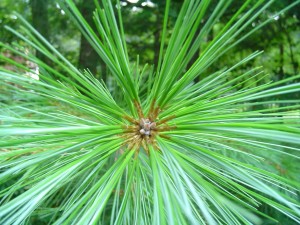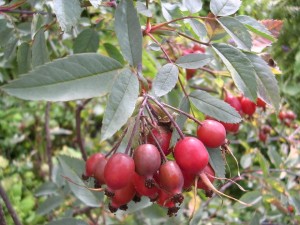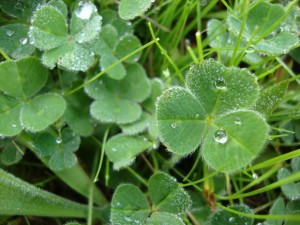Since you never know when you may be caught high and dry in the wilderness with little or nothing in the way of survival gear or emergency food, this article aims to arm you with some extra knowledge about common wild edibles. We’ll go over 10 of the most common wild edibles, what nutrition they contain and how to prepare them or which part(s) to eat.
1) Dandelions
Renowned as a weed and the bane of many a lawn-owner’s existence, the common dandelion is actually one of the best wild edibles you could ever hope for. Not only does dandelion grow practically everywhere, you also need practically no training to recognize it (especially when it is in flower) and it is absolutely loaded with nutrients.
The nutrients in dandelion include minerals and vitamins such as beta carotene, iron and calcium. Dandelion is also loaded with potassium, biotin, magnesium, phosphorous and zinc, as well as vitamins B1, B2, B5, B6, B12, C, E and vitamin D. Both the green leaves and the yellow flowers are edible, though most people prefer to just eat the leaves; dandelion greens can be eaten in salads or boiled like spinach or added to soups. They tend to be a more bitter green, so if you want to ease the bitterness try boiling them for a while with 2 – 3 changes of water.
2) Pine Trees

Pine trees might not seem like an obvious source of food, but they are actually a pretty nice, versatile food source. Use pine needles to steep a zesty, refreshing tea that will also replenish your vitamin C levels – pine needle tea had 3 – 5 times as much vitamin C as orange juice. Pine nuts are also edible, highly nutritious and packed with protein; you can eat them raw, roasted, tossed into a salad or ground up into nut butter.
During spring and summer the new, soft green growth of pine needles is edible, too. In a truly tight spot, you can eat the inner bark of a pine tree as well. The inner bark is a good source of sugars and several different vitamins, and you can eat it raw or make it a little more palatable by boiling it. The inner bark can also be dried out and pulverized into flour.
3) Clover
Another plant known more as a weed and a pest in the garden than as a potential food source, you’d be surprised how tasty clover can actually be. White and red clover are both edible, and can be chewed on and eaten raw, tossed in salads, or boiled in soups, stews or a tea. Clover flowers are especially useful for making tea, with a naturally light sweet flavor. Many traditional recipes for hot teas and tonics include clover, as well.
4) Tulips
 Okay, so these are often cultivated specifically for their lovely springtime blooms, but many tulips grow wild and they are an edible source of food. Just ask the Dutch who, during WW2, resorted to eating tulips in the face of widespread famine. The edible parts of a tulip include the flower petals, which can be eaten raw, added to salads, boiled in soups or made into tea.
Okay, so these are often cultivated specifically for their lovely springtime blooms, but many tulips grow wild and they are an edible source of food. Just ask the Dutch who, during WW2, resorted to eating tulips in the face of widespread famine. The edible parts of a tulip include the flower petals, which can be eaten raw, added to salads, boiled in soups or made into tea.
Tulip bulbs are also edible, although the center of the bulb should be removed and they must be cooked very thoroughly before being eaten due to their mild toxicity. Peel tulip bulbs like an onion prior to boiling or cooking; you can also dry the bulbs and pound them into flour. Tulips aren’t the tastiest edible ever, though, especially the bulbs.
5) Black Walnut

Walnuts are one of the easier wild nuts to identify, just look for the giant green ball, sometimes as large as a fist, hanging from the branches or turning gradually brown / black on the ground in autumn. Black walnuts have a rough outer husk that will be green on the tree and then will turn black during autumn as the nuts sit on the ground; beneath the husk you’ll find the inner chamber that you break open to get the nut.
Rich in healthy fats as well as protein, black walnuts also contain magnesium, phosphorous, manganese and copper. The intrepid prepper is in luck with black walnuts, too, because most animals don’t like chewing through the tough, bitter outer husk that protects the nut. That means you can find black walnuts still lying on the ground well into fall and winter.
5) Hazelnuts (Filberts)

Although these are a seasonal wild edible, hazelnuts are a fantastic, bountiful source of food when you can find them. Packed with calories, healthy fats and protein, hazelnuts are also a good source of vitamin E, manganese, thiamine and copper. Look for hazelnuts in the fall when they ripen within their little green husks. Hazelnuts generally grow in dense clusters, and you’ll know they are perfectly ripe when they practically fall out of their green husks.
6) Wild Asparagus

Quite similar to the kind you buy in store, wild asparagus has a much thinner stalk than its domesticated cousin, but it is equally edible and packed with nutrients. Whether you eat it raw or boil it, you can prepare wild asparagus exactly as you would the normal variety and it’s full of vitamin C, potassium, thiamine and vitamin B6.
7) Cattails
 While they aren’t the tastiest food ever, cattails provide a surprising source of emergency survival food in a pinch, and they beat eating beetles. Younger cattail is softer and quite edible, but you can also eat the rootstalk of the plant (wash it very thoroughly) either raw or boiled. The leaves can also be boiled and eaten, and you can eat the inner portions of the stalk raw or boiled to soften them. In spring and early summer, when the female spike on the cattail is still young and developing you can break it off and eat it raw like corn on the cob.
While they aren’t the tastiest food ever, cattails provide a surprising source of emergency survival food in a pinch, and they beat eating beetles. Younger cattail is softer and quite edible, but you can also eat the rootstalk of the plant (wash it very thoroughly) either raw or boiled. The leaves can also be boiled and eaten, and you can eat the inner portions of the stalk raw or boiled to soften them. In spring and early summer, when the female spike on the cattail is still young and developing you can break it off and eat it raw like corn on the cob.
8) Rose Hips

While rose hips were once a staple in many folk remedies, and a popular item for making tea, jams and preserves, many people overlook this great wild edible. Sweet and tangy, these juicy red fruits grow in the summer and fall on wild roses after the petals have fallen from the flowers. There are many ways to eat rose hips, including steeped raw, steeped as a tea, in fruit salad and preserved as a jam. You can also make a light, sweet syrup from the juice of rose hips and they are a great source of calcium, vitamin C, vitamin E, vitamin K, vitamin A and manganese.
You can also use rose hips to make what is called rose water. Boil the rose hips in water and then strain the fruit out; when the rose water is cool you can drink it and apply it topically as a tonic. Rose water has natural antiseptic and anti-inflammatory properties, so it’s a great remedy to have on hand and it’s easy to make, too.
9) Raspberries, Blackberries & Boysenberries

For anyone with a sweet tooth and those who love their fruits, you’re in luck because in most areas wild raspberries, blackberries and even boysenberries tend to thrive. You can find these easily identified plants in forests, meadows, along country roads and practically everywhere in between, but be careful not to eat berries from plants treated with herbicides or pesticides.
While it might not need saying, you can collect these berries from mid-summer on through fall. Eat them raw, on cereal, in jams, dry them, bake them in pies or make juice of them, there are tons of things you can do with these sweet, tart berries. They’re also loaded with vitamin C, vitamin K and healthy sugars, so enjoy.
10) Mushrooms

In reality, this should probably be another list in and of itself, since there are many, many types of wild mushrooms that are edible, but mushrooms in general are worthy of note. Whether you eat them raw, sauté them, grill them, boil them, make gravy of them or add them to soup or to eggs, wild mushrooms can add flavor and quite a bit of nutritional content to your meal.
When it comes to identifying mushrooms, however, you must be absolutely certain as there is no room for doubt; many edible mushrooms have poisonous relatives who look very similar and death by mushroom poisoning is a slow and painful process, so be careful. For those who know what they are doing, though, the forest offers a bounty of edible mushrooms, including: oyster mushrooms, chanterelles (an orange, trumpet-shaped mushroom), portabella mushrooms, lobster mushrooms, edible boletus (known more commonly as porcino mushrooms) and many more.
Hopefully you’ve enjoyed this short guide to some of the wild edibles available in a survival situation. Remember to exercise extreme caution whenever you consume wild edibles, and don’t consume a food unless you are absolutely certain of your identification.
This article has been written by Gaia Rady for Survivopedia.







